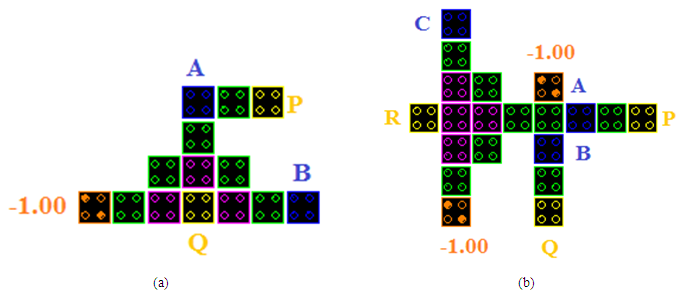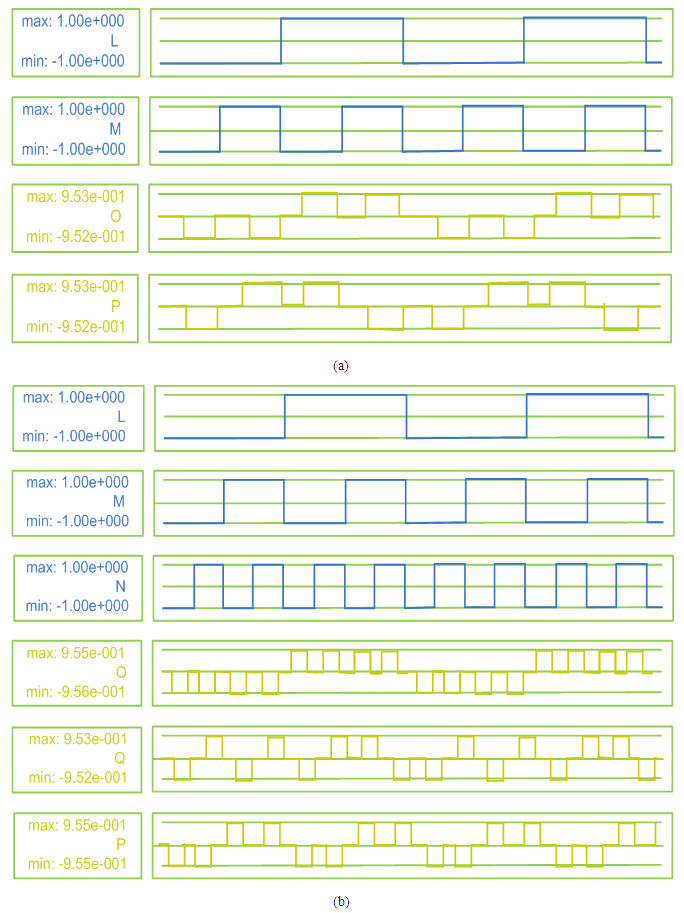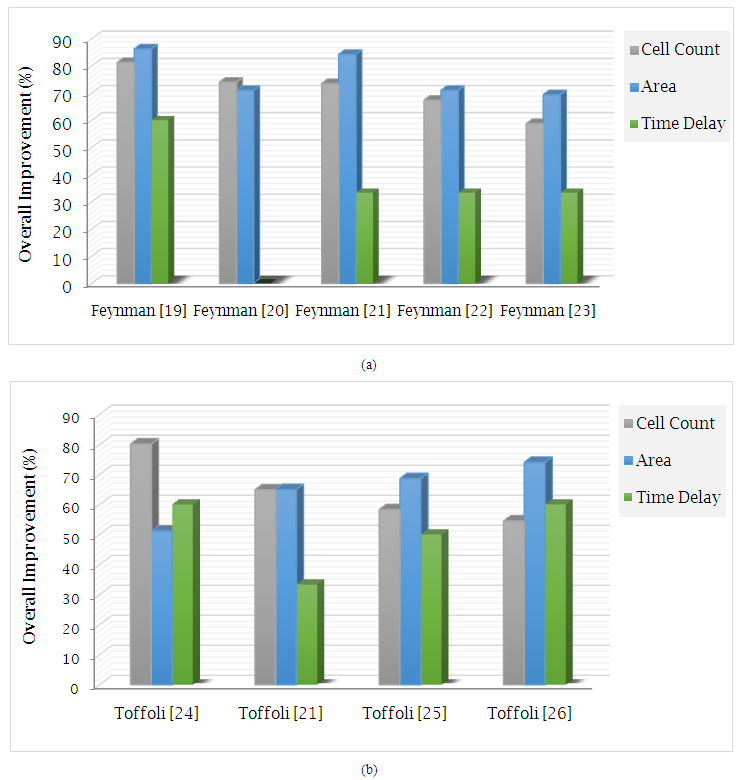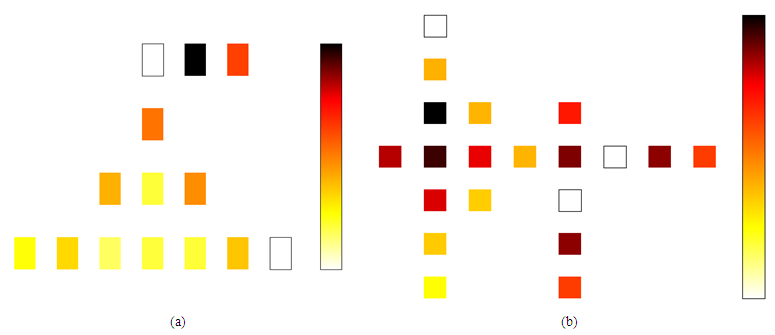-
Paper Information
- Paper Submission
-
Journal Information
- About This Journal
- Editorial Board
- Current Issue
- Archive
- Author Guidelines
- Contact Us
Nanoscience and Nanotechnology
p-ISSN: 2163-257X e-ISSN: 2163-2588
2017; 7(2): 27-33
doi:10.5923/j.nn.20170702.01

Efficient Design of Feynman and Toffoli Gate in Quantum dot Cellular Automata (QCA) with Energy Dissipation Analysis
Provash Kumar Biswas 1, Ali Newaz Bahar 1, Md. Ahsan Habib 1, Md. Abdullah-Al-Shafi 2
1Department of Information and Communication Technology, Mawlana Bhashani Science and Technology University, Tangail, Bangladesh
2Institute of Information Technology (IIT), University of Dhaka, Dhaka, Bangladesh
Correspondence to: Ali Newaz Bahar , Department of Information and Communication Technology, Mawlana Bhashani Science and Technology University, Tangail, Bangladesh.
| Email: |  |
Copyright © 2017 Scientific & Academic Publishing. All Rights Reserved.
This work is licensed under the Creative Commons Attribution International License (CC BY).
http://creativecommons.org/licenses/by/4.0/

Reversible computing in Quantum-dot Cellular Automata (QCA) is an expanding research field at ultra low power nano-computing area. Utilization of minimum power, rapid momentum, advanced switch in grate and scale arrangement of QCA assurances cost operative proficient logic outline with extreme intricacy at nano-scale. In this article two fundamental reversible logic gates, Feynman and Toffoli gate are presented. In contrast with earlier QCA layouts, the proposed designs are achieved with the lowest number of QCA cells, minimal extent and clock delay exclusive of any wire-crossing approaches. Moreover, the proposed circuits have been verified and simulated using QCADesigner and QCAPro has been employed to estimate the power dissipation.
Keywords: Feynman gate, Toffoli gate, Quantum-dot Cellular Automata, QCADesigner, QCAPro
Cite this paper: Provash Kumar Biswas , Ali Newaz Bahar , Md. Ahsan Habib , Md. Abdullah-Al-Shafi , Efficient Design of Feynman and Toffoli Gate in Quantum dot Cellular Automata (QCA) with Energy Dissipation Analysis, Nanoscience and Nanotechnology, Vol. 7 No. 2, 2017, pp. 27-33. doi: 10.5923/j.nn.20170702.01.
Article Outline
1. Introduction
- As stated by Moore, the constituent’s quantities on a chip will twice every 18 months [1]. In recent times, existing metal oxide semiconductor (CMOS) archetype apprehends to its substantial confines and confronts certain defiant difficulties as challenges in the aspect size diminution and the extreme power utilization. Quantum-dot cellular automata are notable nanotechnology and one of the substitutes to switch the regular CMOS archetype with holding better density and swift switching momentum [2, 3]. QCA archetype is a united computation and conduction method to form logical circuits at nano-scale level and projected to perform with thicknesses of 1012 devices/cm2 in 100 GHz range [3-5]. These promote several researchers to perform novel circuits in QCA [6-18]. The layouts of Feynman gate have been explored in based on QCA [19-23]. Coplanar crossing based Toffoli gate has been introduced in [24]. A novel design of QCA based Toffoli gate has been presented in [25, 26]. This article represents the QCA outline of two imperative reversible gates such as Feynman and Toffoli gate. Besides, the energy depletion by the proposed designs is assessed that approves the outlook of QCA micro-device performing as are placement phase for the realization of reversible logic circuits. The firmness of the layouts beneath thermal randomness is assessed, presenting the effective proficiency of the proposed layouts.This paper is organized as follows. In Section 2 the layout of the proposed Feynman and Toffoli gate is illustrated. The simulation and result comparison is presented in Section 3. Section 4 shows the energy utilization and consistency of the proposed layouts. Finally, the study is concluded in Section 5.
2. Proposed Reversible Gates
- Reversible circuits have a wide range of application in low power logical circuit design [12, 18, 20, 22]. The total figure of outputs and inputs are identical in reversible gates. Whenever require to attain the number of outputs and inputs equal, an additional output or input can be adjoined. So, in a reversible logic circuit a one to one correlation between the outputs and inputs endures. Moreover, it should be designed with minimum amount of reversible gates, garbage outputs and quantum cost to have a better realization and least intricacy [15, 16].
2.1. Feynman Gate
- Feynman is a 2x2 reversible gate containing a quantum cost equivalent to one. It is extensively utilized to present fan out in reversible circuits. The logical expression between the inputs (A, B) and outputs (P, Q) is presented by:
 | (1) |
 | (2) |
 | Figure 1. Proposed QCA design of (a) Feynman gate, (b) Toffoli gate |
2.2. Toffoli Gate
- Toffoli is a 3x3 reversible gate having a quantum cost of five. In this reversible gate, the inputs (A, B, C) are associated to the outputs (P, Q, R) by:
 | (3) |
 | (4) |
 | (5) |
3. Simulation and Result Analysis
- The simulations are attained by bistable simulation engine, QCADesigner [30]. The input-output waveform of the proposed Feynman and Toffoli gates is shown in Figure 2 (a) and (b) respectively. In Figure 2, the outcomes of bistable tool with the succeeding features are applied: relative permittivity 12.90, clock down 3.8×10−23 J, clock up 9.8×10−22J, amplitude factor of clock 2.00, and highest iterations per sample 100. It can be realized from Figure 2, the designs work acceptable and the outcomes of all proposed QCA circuits attain thorough extremely polarized signals that can present a top drivability for QCA circuits.
 | Figure 2. Simulation outcome of the proposed QCA circuits (a) Feynman gate, (b) Toffoli gate |
|
 | Figure 3. Designing improvement achieved by the proposed (a) Feynman gate and (b) Toffoli gate over the previous design |
4. Energy Depletion and Consistency Analysis
- Every QCA cell shows equivalent energy depletion. Through procedure in single cycle, the depletion by the total circuit is projected by respecting the whole of energy depletion of all majority voters with inverters [31-33]. The QCAPro tools has been used to find the depletion of the proposed circuits at temperature T=2.0 K in separate channeling energy [34]. At 0.5 Ek tunneling energy level our proposed Feynman and Toffoli gate dissipate 10.02 meV e and 23.28 meV e respectively. The energy dissipation of proposed design at different tunneling energy level is given in Table 2 and the thermal map is shown in Figure 4.The output polarization of any cell of the QCA layout is diminished by enhancing the temperature [16]. The process in [18] described the overall significance of output polarization. The temperature consequence on the output polarization of the proposed outlines is shown in Figure 5. From the figure, it is clear that both the design works proficiently between 1K to 10K. At the temperature 11K, the average output polarization drops dramatically and the design start malfunctioning.
|
 | Figure 4. Energy dissipation maps of (a) Feynman gate and (b) Toffoli gate at 2K temperature with 0.5 Ek tunneling energy level |
 | Figure 5. Temperature consequence on output polarization of the proposed QCA layouts |
5. Conclusions
- In this paper, an efficient layout of Feynman and Toffoli gate has been presented in QCA technology. The proposed design is intense and has depleted latency than the existing design. Simulation outcome of the proposed circuit reveal the accuracy and efficacy. The proposed outlines are proficient to overcome the limitations of the earlier QCA design. These novel designs can be utilized as proper modules for fabricating of the low power consuming reversible nano communication device.
 Abstract
Abstract Reference
Reference Full-Text PDF
Full-Text PDF Full-text HTML
Full-text HTML
